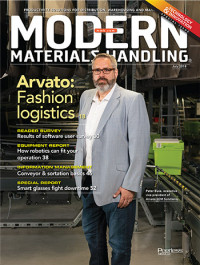Arvato SCM Solutions: Fashion Logistics
At its Hannover, Germany, facility, e-commerce logistics provider Arvato SCM Solutions is using pouch sortation technology to speed orders to market and dramatically reduce its returns processing time for a fashion leader.
“Internationalization, standardization and digitization.”
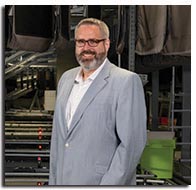 Those are the three words that Peter Buse, executive vice president of Arvato SCM Solutions, uses to describe how business is changing for a third-party logistics (3PL) provider offering order fulfillment services for consumer products manufacturers and fashion retailers.
Those are the three words that Peter Buse, executive vice president of Arvato SCM Solutions, uses to describe how business is changing for a third-party logistics (3PL) provider offering order fulfillment services for consumer products manufacturers and fashion retailers.
“In our unit, it’s all business-to-consumer (B2C) e-fulfillment of products ranging from fashion and beauty to fast-moving consumer goods such as food and pet foods,” Buse says. “In general, our customers want us to operate worldwide—to have the same systems and solutions in place on a global basis and to provide any kind of service required by their customers, from omni-channel fulfillment to click and collect, and direct-to-store delivery.”
What’s more, that has to happen in an environment where online customers expect the items displayed on the Website to be available when they order, and to get those orders sooner rather than later. Finally, the e-commerce customer also expects liberal return policies, especially when it comes to fashion and beauty products, resulting in a return rate up to 50%, especially in countries like Germany or Austria where returns are normally free.
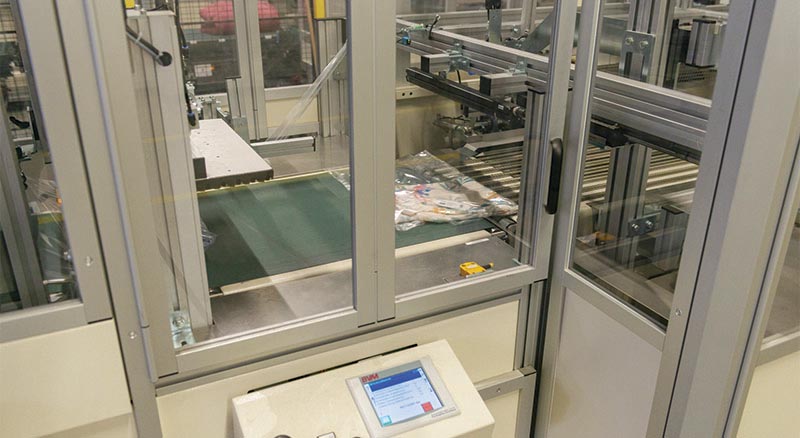
After the inspection process, returns are automatically repackaged for resale (top). Then they are conveyed to the pouch sorter where they are automatically loaded into a pouch that is routed to the buffer storage area.
To make those a reality for one of its fashion apparel customers, Arvato built a new 508,000-square-foot distribution center in Hannover, Germany, dedicated to e-fulfillment. A centerpiece of the facility is a pouch sortation system (Dematic) that is not only used as an order fulfillment engine, but is essential to the quick and efficient processing of returned items.
“For our customer in this location, stock availability is crucial because they only have four to six weeks to sell through inventory before the next season is released,” says Buse. With return rates of up to 50%, “the sooner we can get a return back as available in the online store, the better.” In fact, about 30% of orders are now filled from the inventory of returned items.
Using an automated returns process, including the pouch sorter, has allowed Arvato to reduce the returns processing time from between two and seven days to as little as an hour or less. What’s more, out of stocks have been reduced from 1.5% to 2% in the old facility, which was used until 2015, to less than half a percent in the new distribution center while quality related errors have been reduced to almost zero. “We have improved our service to our client and improved the throughput time for how fast their customers get an order,” Buse says.
A history of distribution
Founded in the 1950’s as a book distributor, Arvato may not be a household name to readers of Modern, but the wholly owned subsidiary of the global publisher Bertelsmann employs more than 70,000 employees in 40 countries and generates more than 3.8 billion euros in annual revenue. In addition to publishing, Arvato has clients in healthcare, automotive, high tech and consumer products, including e-fulfillment. It is particularly strong in Europe, where Arvato estimates that on average, “every consumer in Germany comes into contact with us eight times a day.” Additional offerings include financial services, customer relationship management, supply chain management and IT services.
According to Buse, Arvato has managed fulfillment of this particular customer for almost 20 years, including not just clothing and footwear, but also its beauty, fragrance and lifestyle products—everything from swimwear to perfumes to table linens for the dining room.
Until the new facility went live in 2015, operations took place in a conventional, manual facility that was typical of a 3PL. “As the business grew massively, we added one processing area after another,” Buse says. “We did add limited automation in the returns area and a shipping conveyor, but quality became an issue, speed was an issue, and people were an issue, especially in peak.”
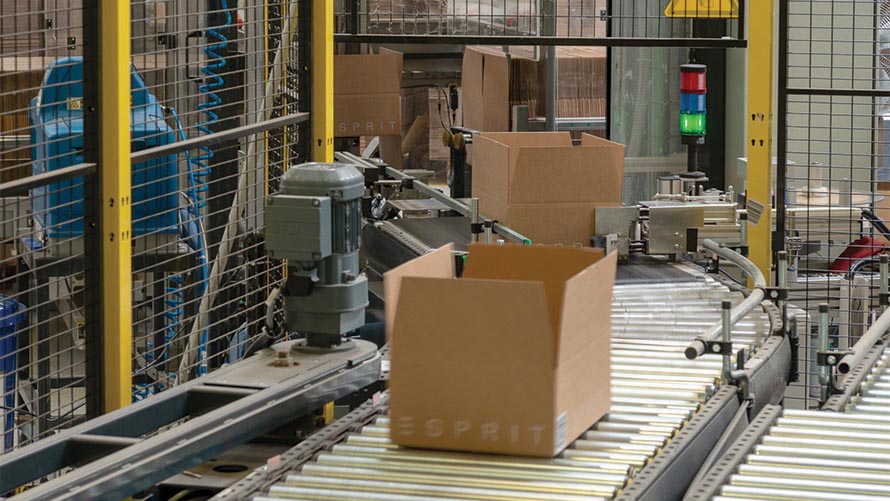
An automatic carton erector creates shipping containers that are routed to packing
Given the rapid evolution of the e-commerce space, speed was of particular concern. It was not just the quick order turnarounds that customers have become accustomed to, especially in urban areas where same-day delivery is becoming a norm. The Arvato facility serves customers in 25 different European countries, each with its own order cutoff time.”
“If the truck to a particular country is going to leave at 5:00 in the afternoon, the goods for that truck have to be ready,” Buse says. Turning around a return was also an imperative. “You have a four- to six-week selling season before the next release,” he says. “But, it takes two days to get items back from say Spain or Switzerland and then time to process them. The sooner we can get information about a return, and then receive and repackage it, the faster we can resell it.” He adds that during peak season, when customer interest is at its height, it could take five to seven days to receive an item and get it back on the shelf in the old facility.
By 2014, with no more room to expand the old facility and orders continuing to grow, the decision was made to build a new, automated warehouse that could address each of those concerns.
Automation in Germany
The story of Arvato’s unique approach to handling returns and e-commerce fulfillment is the second of three system reports planning to run this year in Modern that focus on materials handling best practices outside of North America. The first, which focused on a leap into automation by Everest, India’s largest and best-known brand of spices, was published in the June issue.
In each, we want to not just focus on the company at hand, but look a little deeper into some of the trends impacting industrial production and distribution in each of the countries we feature. Think of it as the National Geographic approach to the subject. Our tour guide to Germany is Rainer Buchmann, a business development executive at Dematic. Buchmann has more than 33 years of experience in the materials handling industry.
We often think of European retailers, distributors and manufacturers as being light years ahead of North America when it comes to the adoption of automation technologies. After all, European companies account for seven of the Top 10 suppliers on Modern’s list of the Top 20 suppliers of automated systems. Yet, third-party logistics (3PL) providers like Arvato are as reluctant to implement hard automation as their North American counterparts. “As a rule, they get one-year contracts, and it’s hard to justify an investment in automation over one year,” says Buchmann. He adds that even in Europe, automation has historically been viewed as inflexible because its generally designed for a sweet spot of order profiles. “If those order profiles change, which happens in the 3PL market, it’s more efficient to have a manual operation,” he says.
That attitude toward automation is changing, especially in facilities dedicated to e-commerce fulfillment like Arvato’s Hannover facility. The change is being driven by several factors.
One is the arrival of flexible automated solutions such as shuttle systems and pouch sorters. “Whether you’re handling food, spices or who knows what, a shuttle system is a fulfillment engine that can deliver a lot of totes per hour, which is the currency of logisticians,” Buchmann says. “If your needs change or the products change, you can reconfigure the totes, add workstations or scale the systems.”
A second is the speed of installation, thanks to standard components and subsystems. At times, speed trumps price. “If a supplier can install a system in 8 months and the competition is 12 months, that supplier may get the job even if it is more expensive, because time to market is so important,” Buchmann says.
The third is people. In Europe, distribution centers are going up near universities, where theoretically there is lots of temporary labor, and in Eastern European countries like Poland, where land and labor is perceived to be cheaper than Western Europe. But, even in those locales labor is tight “especially on the third shift because no one wants to work at night,” Buchmann says. Automation is becoming a necessity rather than a nice to have.
Finally, quality plays a role. “Manual scanning produces a lot of errors,” Buchmann notes. “In a goods-to-person or pouch system the order picker only has one source to choose from.”
Designing for speed
According to Buse, four criteria were critical for the design of the new facility. First, the system needed to be flexible and scalable so it could easily grow as the customer’s e-commerce business continued to grow.
Next, they needed to reduce throughput times to ship on a “country-optimized basis,” meaning the capability to fill and ship orders in the most cost-efficient manner to the 25 countries served by the facility. At most, the facility has 6 hours between the receipt of an order and getting the parcel on the back of the right truck for the right country.
Third was to increase the quality of the operations through scanning of all processes in the warehouse. That would reduce picking errors and improve visibility.
Last, the system needed to streamline the returns process so that goods were available for resale as soon as possible.
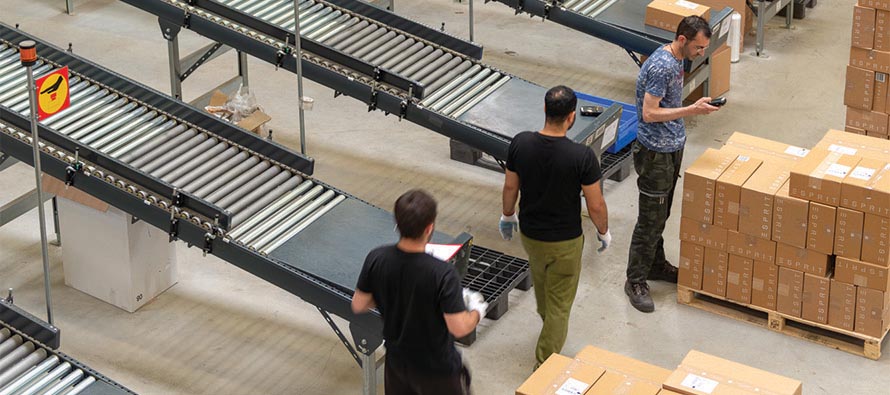
In the shipping area, associates build pallets destined for one of 25 different European countries.
Arvato expected to implement a shuttle system until it learned about pouch sortation. “The shuttle system would have allowed us to operate with fewer people,” Buse notes. “But the pouch sorter was a less expensive solution that allowed us to achieve the quality, throughput and scalability results we were looking for.” The facility also features a three-level pick mezzanine, which optimizes floor space in the facility.
In fact, the pouch sorter is the fulfillment engine in the new facility, starting with the returns process. In the old facility, returns were inspected and if suitable for resale, were folded, repackaged and then put in big boxes that were conveyed and sorted to various areas in the facility. Once they reached the right picking area, each item had to be removed from a box, scanned to determine a picking location and then scanned again into a bin at that location. All told, it took two to seven days to process a return and have it ready for resale on a shelf, depending on the time of year.
In the new system, returned parcels still need to be open and inspected as before, but now every workstation includes access to the conveyor system. Once an item has been approved for resale, it’s folded by the associate and conveyed to a station where it is automatically repackaged in shelf-ready packaging. From there, it is conveyed to an induction station where it is automatically dropped into a pouch. The pouches are then transported to a dynamic buffer storage area in the ceiling and the item is available for resale in the online store. The whole process has been reduced from days to about an hour.
Order fulfillment happens in batches of 10,000 pieces per hour. A typical order has four items. The system first looks to see if needed items are available in the dynamic buffer storage area. If so, those are sorted to a packing station. The remaining orders are picked to totes in the pick mezzanine, and then conveyed to an induction area where associates scan and drop items into a pouch. Single line orders go directly to packing while multi-line orders are combined with other items in the dynamic buffer storage area, and are then sent to packing. Orders are also optimized by country to streamline shipping.
After operating for a little more than two years, Buse says the new facility is operating at a higher volume than the old system, and handling growth without issue. “Today, we can operate at a high volume of orders and still process returns quickly,” he says. “Peak is no longer a hassle for us.” In addition, the system manages the complexity of shipping to 25 different countries within Europe. “In the past, that was dependent on our shipping department, which wasn’t always optimal,” he says.
Take a look at the in-depth Systems Report for Arvato SCM Solutions here.
Having made a leap from a completely manual facility to a highly automated DC, Arvato is now looking at ways to further optimize its operations, including robots for some operations. While that may still be down the road, Buse says it is illustrative of where the company is headed. “I think we’re performing on the cutting edge at the moment,” he says.

Article Topics
Inventory & Picking News & Resources
Siemens, Universal Robots, and Zivid partner to unveil smart robotic picking solution AI-based inventory monitoring solution provider Gather AI raises $17 million NRF 2024 retail sales forecast calls for growth Swisslog gives live demonstration of ItemPiQ latest evolution Cimcorp automates fresh food distribution with flexible storage, order picking solutions ABCO Systems acquires FastFetch The Ultimate Guide to Reducing Warehouse Travel More Inventory & PickingLatest in Materials Handling
NetLogistik partners with Vuzix subsidiary Moviynt to offer mobility solutions for warehouses Materials Handling Robotics: The new world of heterogeneous robotic integration Lucas Watson appointed CSO for Körber’s Parcel Logistics business in North America Hyster recognizes Dealers of Distinction for 2023 Carolina Handling names Joe Perkins as COO C-suite Interview with Keith Moore, CEO, AutoScheduler.AI: MODEX was a meeting place for innovation Walmart deploying autonomous lift trucks at four of its high-tech DCs More Materials HandlingAbout the Author
Subscribe to Materials Handling Magazine

Find out what the world's most innovative companies are doing to improve productivity in their plants and distribution centers.
Start your FREE subscription today.
April 2024 Modern Materials Handling

Latest Resources



